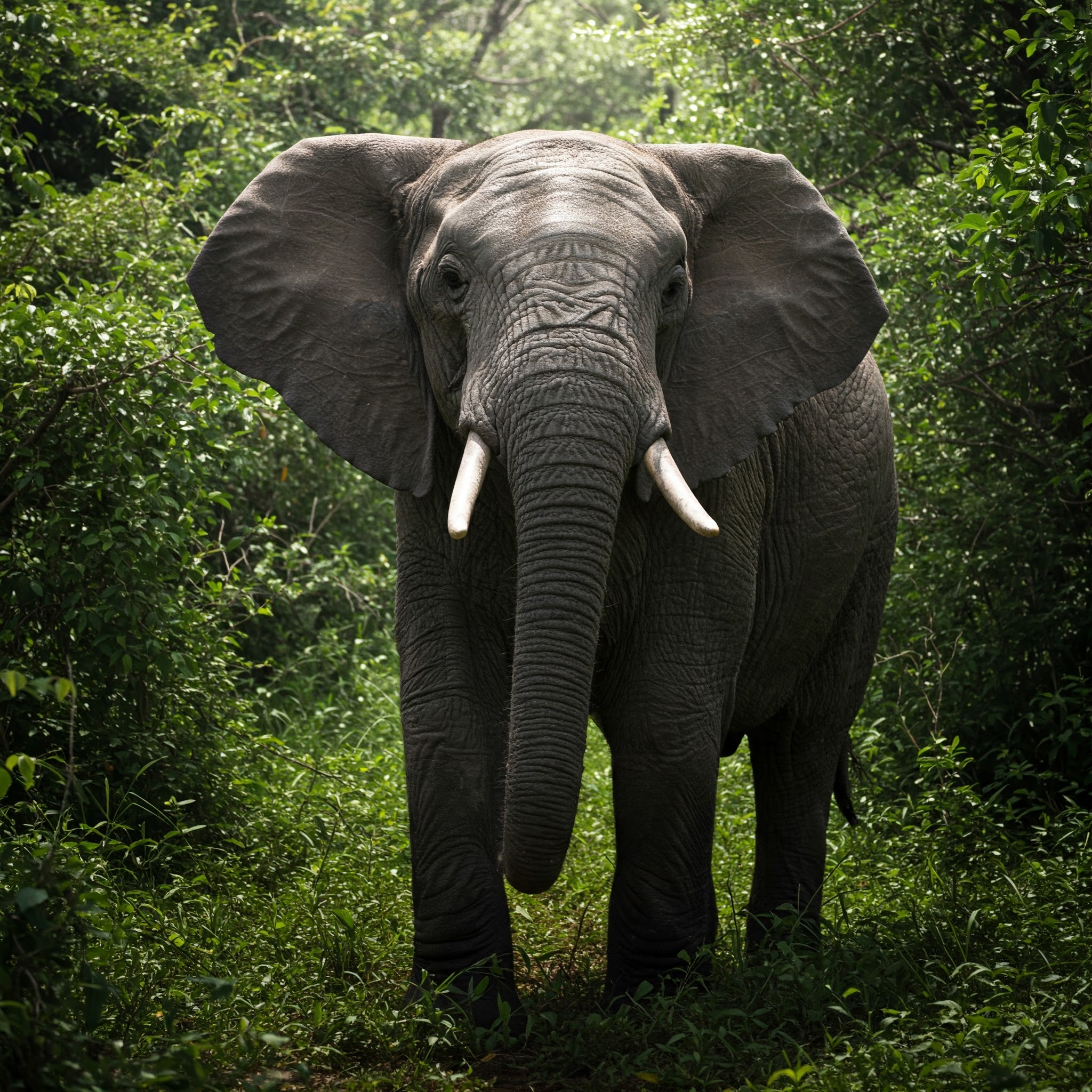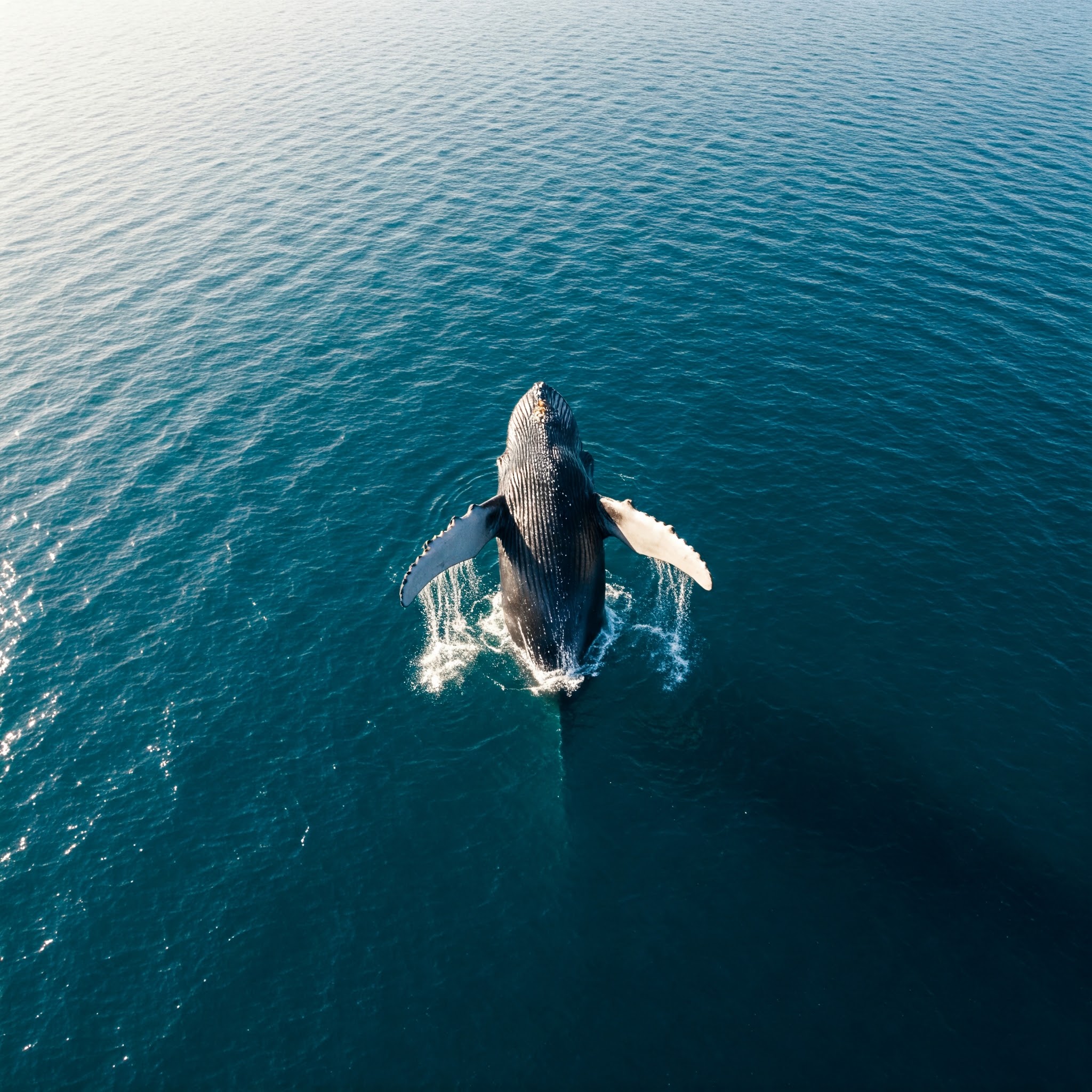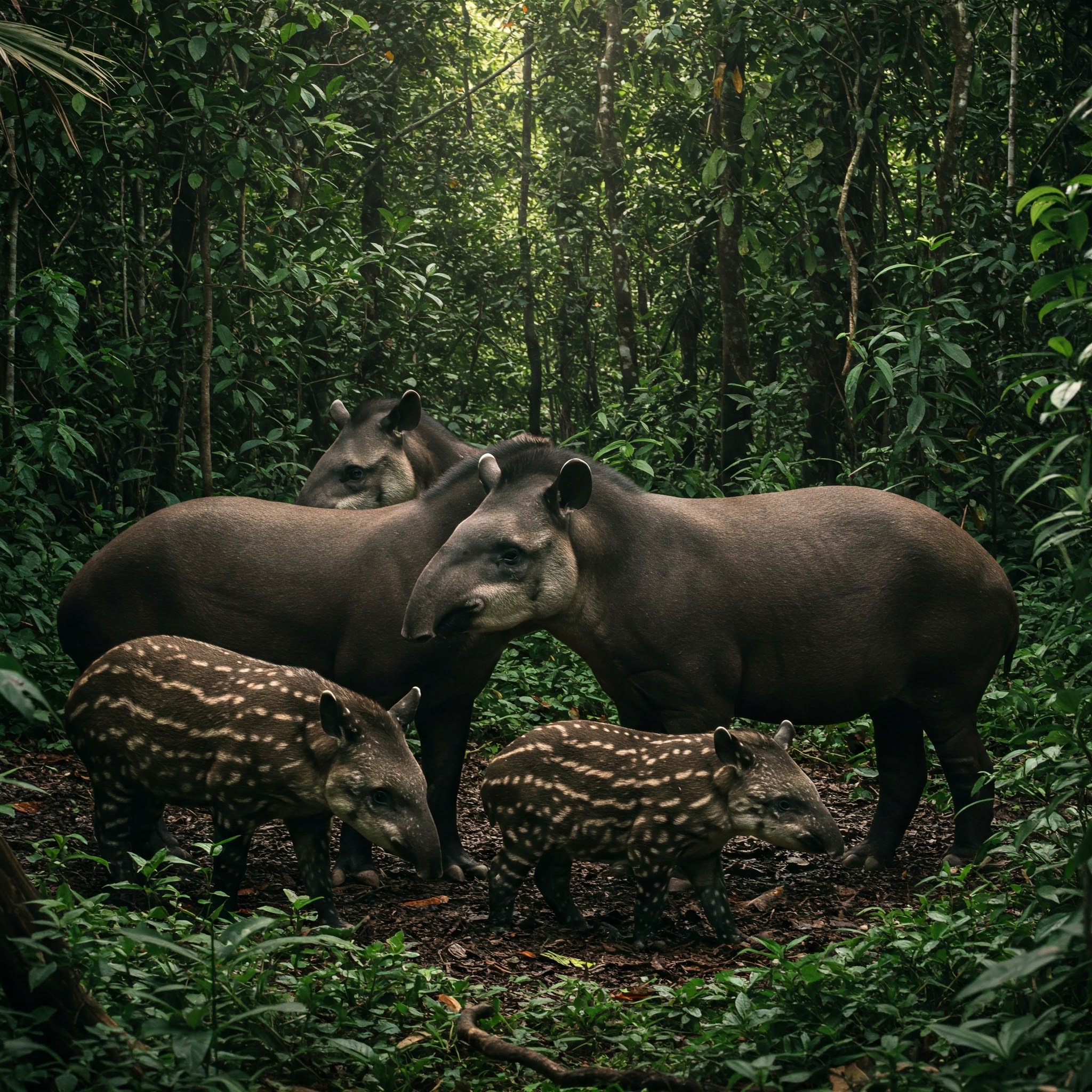From echidnas to elephants, discover the surprising animals that help fight climate change and protect the Earth in unexpected ways!
When we think about protecting our dear planet and fighting climate change, we typically picture electric cars, recycling, solar panels, sustainable agriculture, and tree-planting campaigns. But here’s the thing: certain animals play a fantastic role in restoring ecosystems, keeping the Earth cool, and even capturing atmospheric carbon.
The animal kingdom is truly a wonder, shaping the environment in ways we’re only beginning to fully understand. From small and cute hardworking beavers that create much-needed wetlands to huge whales that help fertilize the oceans, nature’s creatures play a surprising role in maintaining our planet’s balance.
But the list of environmentally friendly animals doesn’t end here. Other creatures, like sea otters, are responsible for protecting underwater forests that store massive amounts of carbon, while elephants are often called “ecosystem engineers” due to their impressive job of clearing dense forests and making room for new plant growth. Believe it or not, even earthworms play a great part in the project, improving soil health, helping plants grow stronger, and absorbing more CO₂.
Today’s article is all about the animals that help fight climate change. We’ll discuss their impressive roles and why conservation efforts are more important than ever. Could the key to a healthier and cooler planet be hiding in the animal kingdom? Let’s find out!

1. Elephants
Elephants are some of the biggest animals that help fight climate change. In Africa, these big mammals love indulging in fruit, leaves, bark, and branches. Since they’re so big and majestic, they tend to eat a lot.
While they might be happy with snacking on hundreds of different types of plants, they’re actually picky eaters. The good news? Their dietary choices give their wooded homes a much-needed climate boost.
According to ecologists, elephants consume the fruit, leaves, or bark of some trees and uproot others. Some experts say that these mammals are more into tree leaves from fast-growing species. Since these trees put much of their energy into growth, their leaves are packed with protein, helping the elephants be satisfied and strong.
…What about other trees?
Trees that grow slowly can reach enormous heights, but only if they aren’t eaten when they’re young. To protect themselves, these trees produce bitter tannins that herbivores find unpleasant.
Elephants prefer the tastier, fast-growing trees, often pulling them out of the ground while they’re still small. They also tend to stomp on young trees, which is why forests with elephants have fewer trees than those without.
However, the trees that survive elephants have more water, space, and sunlight to grow large and tall. The bigger the tree, the more carbon it can store. By including fast-growing trees in their diets, elephants help slow-growing, high-carbon trees thrive, playing a significant role in keeping Earth’s forests healthy and thriving.
…There’s more!
Another reason why we consider elephants among the animals that help fight climate change is that they enjoy eating leaves from fast-growing trees but choose fruit from slow-growing ones, probably because the fruit is bigger.
When these friendly mammals eat the fruit, they also swallow the seeds. As they travel and p**p, they naturally plant these seeds throughout the forest. Thanks to their bowel movements, they help spread high-carbon, slow-growing trees in nature. What can we say? Elephants might just be the real gardeners of their ecosystem!
2. Echidnas
Even though echidnas are often overlooked when it comes to animals that help fight climate change, they’re actually environmental heroes that don’t get enough credit. These spiny creatures, about the size of your house cat, dig holes in search of tasty treats like termites and ants, flinging soil into piles along the way.
This digging creates mounds and pits that trap CO₂ in the soil, keeping it safely out of the air we breathe (isn’t that amazing?). But that’s not all: as they dig, seeds, dead insects, and fallen leaves gather in these pits. The microbes in the soil then break down this organic matter, storing carbon and preventing it from being released into the atmosphere.
Thanks to these natural processes, the greenhouse effect is reduced, and our gorgeous planet gets a little help in the fight against climate change.
Did you know these small mammals have such powerful claws that they can dig up to eight tons of soil per year? And they’re not alone in this battle! Other digging animals, like bilbies, anteaters, jackrabbits, and aardvarks, also help store carbon in ecosystems around the world.
While they don’t exactly eradicate CO₂ from the atmosphere, these animals that fight climate change create environments that help algae, plants, and microbes, which do the hard work of absorbing CO₂, thrive.

3. Whales
If elephants are the Earth’s gardeners, whales are the ocean’s gardeners, and they do an amazing job at protecting our planet and making it healthier. Instead of scattering seeds or pulling “weeds” like elephants in forests, whales spread nutrients like no others.
In forests, trees absorb CO₂, but at the ocean’s surface, that task goes to tiny algae called phytoplankton. Even though nutrients like iron and nitrogen are sometimes scarce in the upper ocean, whales know how to fix that.
Sperm whales dive deep into the ocean to look for food and then come up for a breath. When they do, they release significant amounts of nutrient-packed p**p. This aquatic “fertilizer” helps phytoplankton grow and multiply, allowing them to absorb more CO₂. While much of the carbon they capture is eventually released back into the air, some of it sinks deep into the ocean, where it stays for hundreds or even thousands of years.
Diatoms, a type of phytoplankton, play a significant role in this process. These small creatures build hard, glass-like shells and absorb CO₂. When diatoms die, their shells sink to the ocean floor, taking all that stored carbon with them.
Other animals that fight climate change, like salps, also help with their carbon-rich p**p pellets that quickly sink. Thanks to these creatures and their waste, carbon is stored deep in the ocean.
…What do whales do?
I’ve told you that whales play a huge role in protecting our planet, and here’s another impressive thing they do. While phytoplankton isn’t a direct food source for them, they eat fish and krill that have consumed the phytoplankton.
When these warm-blooded mammals grow, some of the CO₂ from their diet becomes part of their bodies. When a whale dies, it sinks to the seafloor, bringing even more carbon dioxide deep into the ocean.
In conclusion, even though whales don’t directly remove CO₂ from the air, they create healthy environments for microbes, plants, and algae, which do. What can we say? These huge mammals are, without a doubt, ocean heroes!
…Did you know that sea otters are also part of the animals that help fight climate change? Keep reading to discover how they do it!
4. Sea otters
Sea otters are considered one of the cutest animal species on our planet, but they’re also planet heroes working hard to protect our beloved Earth! Thanks to their wonderful contributions, ecologists often refer to them as the guardians of underwater kelp forests.
These adorable, furry marine mammals may be small, but they know how to keep underwater ecosystems healthy and thriving, which in turn helps capture and store CO₂.
One of their most important jobs is protecting kelp forests. Kelp is a type of large seaweed that is amazing at absorbing carbon dioxide from the atmosphere through photosynthesis, just like trees in a forest. But kelp forests are in danger because of sea urchins, which can sometimes wipe out entire forests.
And here’s where our lovely mammals come in! Sea otters love to include sea urchins in their diet, helping keep their population under control. Thanks to their snack preferences, sea otters prevent sea urchins from overgrazing, allowing kelp forests to grow strong and healthy. As a result, CO₂ is easily and effectively absorbed and stored in the ocean.
…Are there any other benefits of having healthy sea otters?
Of course! After all, they’re part of the animals that fight against climate change, aren’t they? Since kelp forests provide food and shelter for many marine species, we can say that sea otters help protect entire ecosystems.
Another great thing is that when kelp dies, some of it sinks to the deep ocean, meaning that carbon stays stored for centuries. If you ever doubt how important sea otters are, here’s what experts have discovered:
Areas with thriving sea otter populations have much healthier kelp forests, meaning CO₂ is stored more effectively. Without these funny, playful, and charming predators, kelp forests could shrink, releasing stored carbon back into the atmosphere.
Even though these adorable mammals don’t remove CO₂ directly, they do a fantastic job of creating the right conditions for kelp and other marine life to do so. When we protect sea otters, we’re also protecting our natural climate change fighters!
…Which of these creatures do you think is the cutest? Pick your favorite and let us know in the comments below!

5. Tapirs
Even though tapirs might not be the first creatures that come to mind when thinking about animals that fight against climate change, we can’t deny these herbivores’ amazing contributions. Found in Southeast Asia and Central and South America, these cute creatures are often referred to as “gardeners of the forest,” thanks to their habit of spreading seeds through their dung.
Tapirs are nature’s hidden heroes, with a pig-like body and a cute, elephant-like trunk that makes them truly unique! They munch on all kinds of fruit and, in return, help the environment out! They leave behind seeds in their droppings, giving new plants a chance to grow and thrive.
According to studies, these animals spread three times more seeds in degraded areas than in forests, helping grow plants that absorb CO₂ and combat global warming. Believe it or not, experts consider that this natural regeneration is among the most affordable and beneficial ways to restore the gorgeous and much-needed tropical forests.
If you’re not fully convinced of how important these animals that help fight climate change are, here’s something that might make you reconsider. Researchers found 24 different types of seeds in tapir droppings, and many of them grow into big, strong trees. These trees help absorb carbon, playing a significant role in slowing down climate change!
6. Tigers
Did you know that tigers are part of the animals that help fight climate change? According to experts, they do a wonderful job of maintaining the balance of ecosystems. Since they’re apex predators, they keep herbivore populations, such as wild boar and deer, in check. Thanks to their eating habits, they stand in the way of overgrazing and allow forests to thrive. In the end, their efforts help trees absorb carbon dioxide.
Another interesting thing about tigers is that they keep humans away from forests, which means that they can no longer chop down trees. The more trees there are in the woods, the more carbon dioxide is captured and stored, leaving the planet healthy and thriving.
By preserving tiger habitats, we also help conserve the natural environment and ensure a future where both wildlife and nature can flourish. Their role in maintaining biodiversity is significant for a healthy planet, making tigers key players in the fight against climate change. Protecting them means keeping forests, wildlife, and the global ecosystem safe. Do you agree?
7. Oysters
This might sound hard to believe, but oysters are part of the animals that help fight climate change. These tiny creatures filter large amounts of water, removing excess CO₂ and reducing ocean acidification, which is harmful to coral reefs and marine life.
But that’s not all. Oyster reefs are like nature’s superheroes, acting as protective barriers for our coastlines. They help keep our beaches safe from erosion while also shielding ecosystems and coastal communities from storm surges and rising sea levels, both highly influenced by climate change. Other than that, oysters provide homes for many marine creatures, making them an important part of underwater life!
When we have healthy oyster reefs, we boost biodiversity, which helps coastal ecosystems become stronger and more resilient in the face of climate change. All we have to do for a healthier planet is to care for oyster populations and support their restoration.
This way, we can create sustainable marine environments that absorb carbon, protect our shorelines, and support a variety of ecosystems. So yes, oysters are part of the animals that help fight climate change.
What can we do?
Protecting the animals that help fight climate change is essential for a healthy and thriving planet. As we’ve already discussed, they play significant roles in habitat restoration, carbon storage, and preserving biodiversity, which are highly important for combating climate change.
There are a few things we can do to keep them safe, and one of them is preserving their habitats. Deforestation and habitat destruction are significant threats to many species. Whether you advocate for stronger environmental protections or support conservation efforts, every action makes a difference.
Another powerful way we can help is by fighting poaching. Many incredible animals, like tigers, face the threat of poaching for their bones, stunning fur, and other body parts. Community-driven anti-poaching efforts and stronger law enforcement are crucial in stopping the illegal wildlife trade. You can make a difference by supporting organizations dedicated to protecting endangered species from poachers.
Last, but certainly not least, supporting sustainable practices is key to having a healthier and thriving planet. Whether it’s supporting sustainable agriculture to protect tapirs or saying no to overfishing to preserve oyster populations, adopting sustainable behaviors is essential.
Before you go…
None of these efforts will be easy, but they’re all part of making the world a better and more flourishing place. Do what you can do, and nature will take care of the rest! If you want to understand more about climate action and simple things anyone can do to fight climate change, here’s a fabulous book to check out.
What are your thoughts on these animals that help fight climate change? Did you know about them? We’d love to know what your thoughts are, so leave a comment below, and let’s chat! If you want to read something else from Pet Compilation, this post will put a smile on your face: 7 Largest Rabbit Breeds Around the Globe













One Response